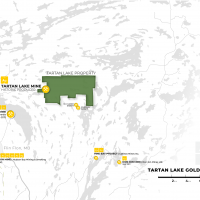Innovative Materials For A Cooler Urban India: Addressing Climate Change

Table of Contents
Cool Roofs: Reflecting Heat Away
Traditional methods and advanced technologies are transforming roof designs to combat urban heat. Cool roofs play a crucial role in reducing surface temperatures and lowering energy consumption for building cooling.
Whitewash and Reflective Coatings: A Simple Yet Powerful Solution
Traditional whitewashing has long been recognized for its cooling properties. However, modern advancements in reflective paint technology offer even greater benefits. These coatings boast significantly improved albedo (the ability to reflect sunlight), leading to substantial reductions in building temperatures.
- Improved albedo: Reflects a higher percentage of solar radiation, reducing heat absorption.
- Reduced energy consumption for cooling: Lower internal temperatures mean less reliance on air conditioning.
- Ease of application: Many reflective coatings are easy to apply, making them accessible for widespread use.
- Long-term durability: High-quality reflective paints offer extended lifespan, minimizing maintenance costs.
- Government initiatives promoting cool roof adoption: Several Indian cities are implementing policies to encourage the use of cool roofs, providing incentives and subsidies.
Specific examples include the use of acrylic-based reflective coatings in Ahmedabad, which have demonstrated a significant reduction in roof surface temperatures. Studies have shown that these coatings can lower roof temperatures by 10-20°C, leading to considerable energy savings and improved indoor comfort.
Green Roofs and Their Thermal Benefits: Nature's Cooling Solution
Green roofs, also known as living roofs, offer a multifaceted approach to urban heat mitigation. The vegetation layer acts as a natural insulator, reducing heat transfer into the building. This insulation effect is particularly impactful in reducing peak internal temperatures.
- Improved insulation: Reduces heat transfer, minimizing the need for cooling systems.
- Reduced stormwater runoff: Vegetation absorbs rainwater, reducing the burden on drainage systems.
- Aesthetic enhancement: Green roofs improve the visual appeal of buildings and contribute to a more pleasant urban landscape.
- Biodiversity benefits: Provide habitat for various plant and animal species, fostering urban biodiversity.
- Potential challenges related to maintenance and water usage: Require regular maintenance and careful water management to ensure their effectiveness.
Different types of green roofs, extensive (shallow soil depth) and intensive (deeper soil depth, allowing for a wider variety of plants), are suitable for various building types. Successful implementations in cities like Mumbai showcase their potential to create both environmentally and aesthetically pleasing urban spaces.
Building Envelope Innovations: Shading and Insulation
Minimizing heat transfer through building walls and windows is crucial for creating thermally comfortable spaces. This involves advancements in insulation materials and strategic building design.
Advanced Insulation Materials: Beyond Traditional Methods
Traditional insulation materials are being supplemented by advanced materials offering superior thermal performance. These materials can significantly reduce energy consumption for both heating and cooling.
- Aerogel: A highly porous material with excellent insulating properties, offering superior thermal resistance.
- Vacuum insulation panels (VIPs): Combine a core material with a vacuum, achieving exceptionally high insulation values.
- Phase-change materials (PCMs): Absorb and release latent heat, buffering temperature fluctuations within the building.
The higher initial cost of these materials is often offset by long-term energy savings and improved indoor comfort. Their application in various building designs, from residential to commercial, is steadily increasing.
Strategic Building Design and Shading Techniques: Harnessing Passive Design
Passive design strategies, employing natural elements to control temperature, are critical for minimizing heat gain.
- Orientation of buildings: Optimizing building orientation to minimize solar heat gain during peak hours.
- Use of overhangs and shading devices: Providing shade to windows and walls, reducing direct sunlight exposure.
- Natural ventilation techniques: Utilizing natural airflow to cool buildings and reduce reliance on mechanical ventilation.
- Incorporating courtyards and green spaces: Creating shaded areas and promoting natural ventilation within buildings.
Many traditional Indian architectural techniques, such as the use of courtyards, thick walls, and overhangs, inherently possess excellent cooling properties. Integrating these principles into modern designs can create energy-efficient and comfortable buildings.
Urban Planning and Greenery: Cooling the Cityscape
Urban planning plays a vital role in mitigating the urban heat island effect through the strategic incorporation of green spaces and permeable pavements.
Urban Green Spaces and Their Cooling Effect: Nature's Air Conditioner
Parks, green corridors, and urban forests contribute significantly to cooling urban environments through evapotranspiration (the process by which plants release water vapor into the air).
- Evapotranspiration: Cools the surrounding air through the release of water vapor by plants.
- Shade provision: Trees and vegetation provide shade, reducing surface temperatures.
- Reduced air temperature: Green spaces lower ambient air temperatures, creating cooler microclimates.
- Improved air quality: Plants absorb pollutants, improving air quality within urban areas.
- Positive impact on human health and well-being: Green spaces provide opportunities for recreation and improve mental well-being.
The design and planning of green spaces need careful consideration to maximize their cooling effect. Incorporating native plant species that are adapted to local climates is crucial for their long-term sustainability.
Permeable Pavements and Water Management: Managing Runoff and Reducing Heat
Replacing traditional impervious pavements with permeable materials significantly reduces surface temperatures and improves water management.
- Reduced surface temperature: Permeable surfaces allow for better air circulation and reduce heat absorption.
- Improved water infiltration: Reduces stormwater runoff and allows water to recharge groundwater supplies.
- Reduced stormwater runoff: Minimizes the strain on drainage systems and reduces flooding risks.
- Potential for groundwater recharge: Allows rainwater to seep into the ground, replenishing groundwater resources.
Different types of permeable pavements, including porous concrete and permeable interlocking pavers, are suitable for various urban contexts. Successful implementations in Indian cities demonstrate their effectiveness in lowering surface temperatures and improving urban water management.
Conclusion
The adoption of innovative materials for cooler cities is not merely a technological advancement but a crucial step towards mitigating climate change impacts in rapidly urbanizing India. By strategically integrating cool roofs, advanced building envelope technologies, and thoughtfully planned urban green spaces with permeable pavements, we can significantly reduce the urban heat island effect. This will contribute to the creation of more comfortable, sustainable living environments and ultimately improve the quality of life for millions. Investing in research, development, and widespread implementation of these innovative materials for cooler cities is essential for building a cooler and more sustainable urban future for India. Let's embrace the potential of innovative materials for cooler cities and work towards a more resilient and livable urban India.

Featured Posts
-
 Anderlecht En De Realiteit Van Een Aantrekkelijk Transferbod
May 30, 2025
Anderlecht En De Realiteit Van Een Aantrekkelijk Transferbod
May 30, 2025 -
 Tartan Mine Receives 300 000 Boost From Mmdf For Resource Update And Pea Canadian Gold Corp Announcement
May 30, 2025
Tartan Mine Receives 300 000 Boost From Mmdf For Resource Update And Pea Canadian Gold Corp Announcement
May 30, 2025 -
 The Six Victims Of A Death Bath A Serial Killers Signature
May 30, 2025
The Six Victims Of A Death Bath A Serial Killers Signature
May 30, 2025 -
 The Surprising Career Shift Of Jacob Alon Leaving Dentistry Behind
May 30, 2025
The Surprising Career Shift Of Jacob Alon Leaving Dentistry Behind
May 30, 2025 -
 Ruben Amorim Stands Firm No Star Player Sale To Manchester United
May 30, 2025
Ruben Amorim Stands Firm No Star Player Sale To Manchester United
May 30, 2025
